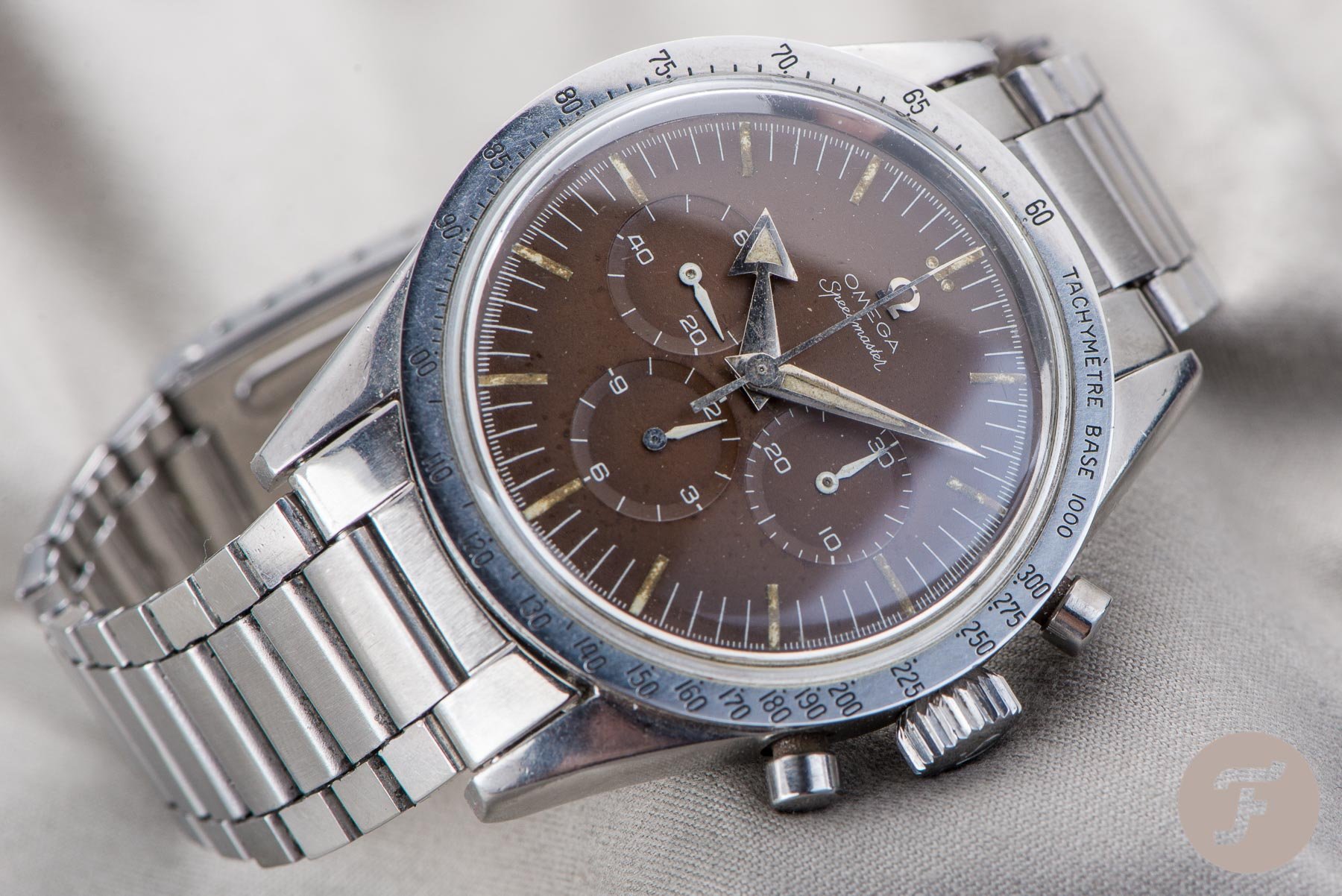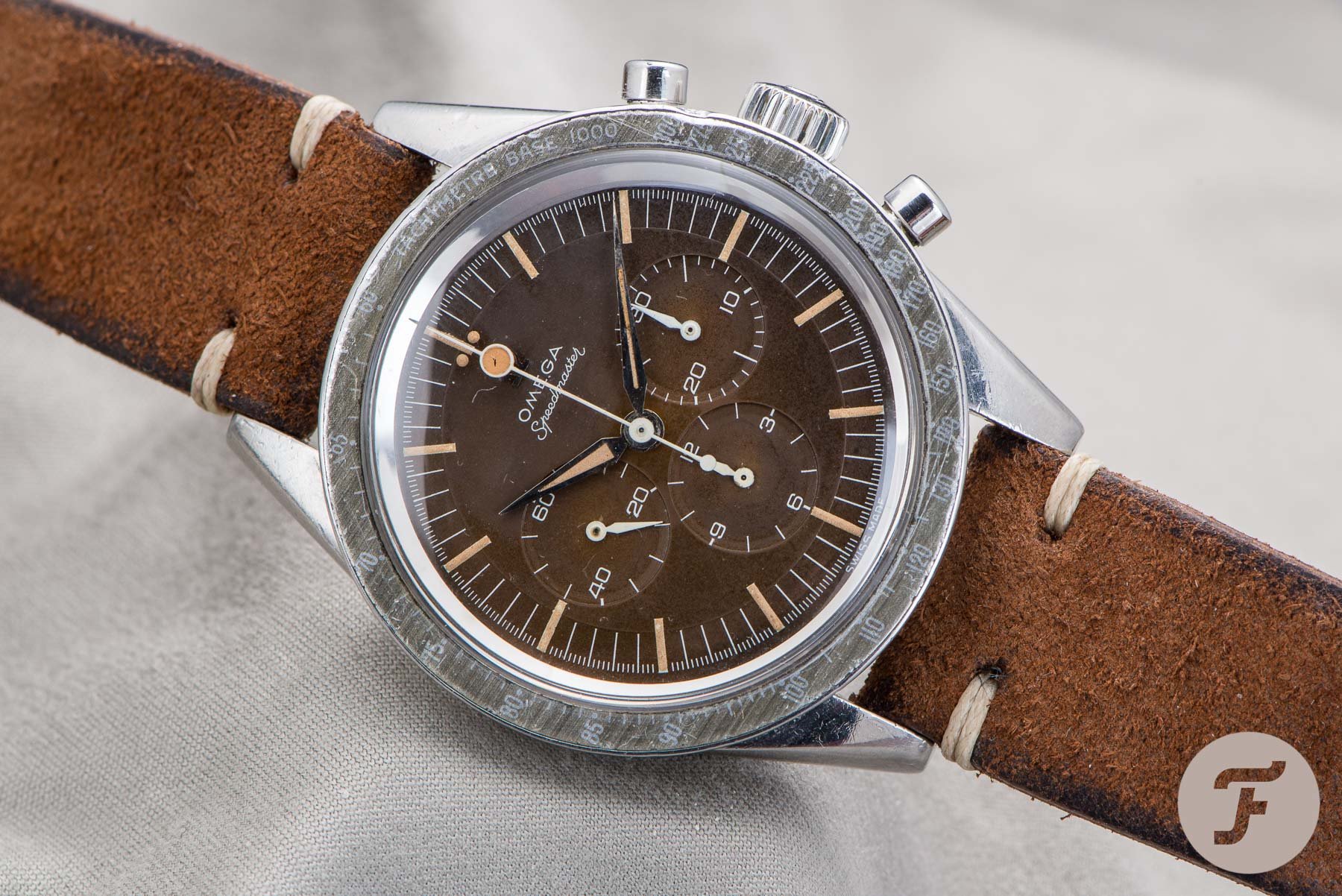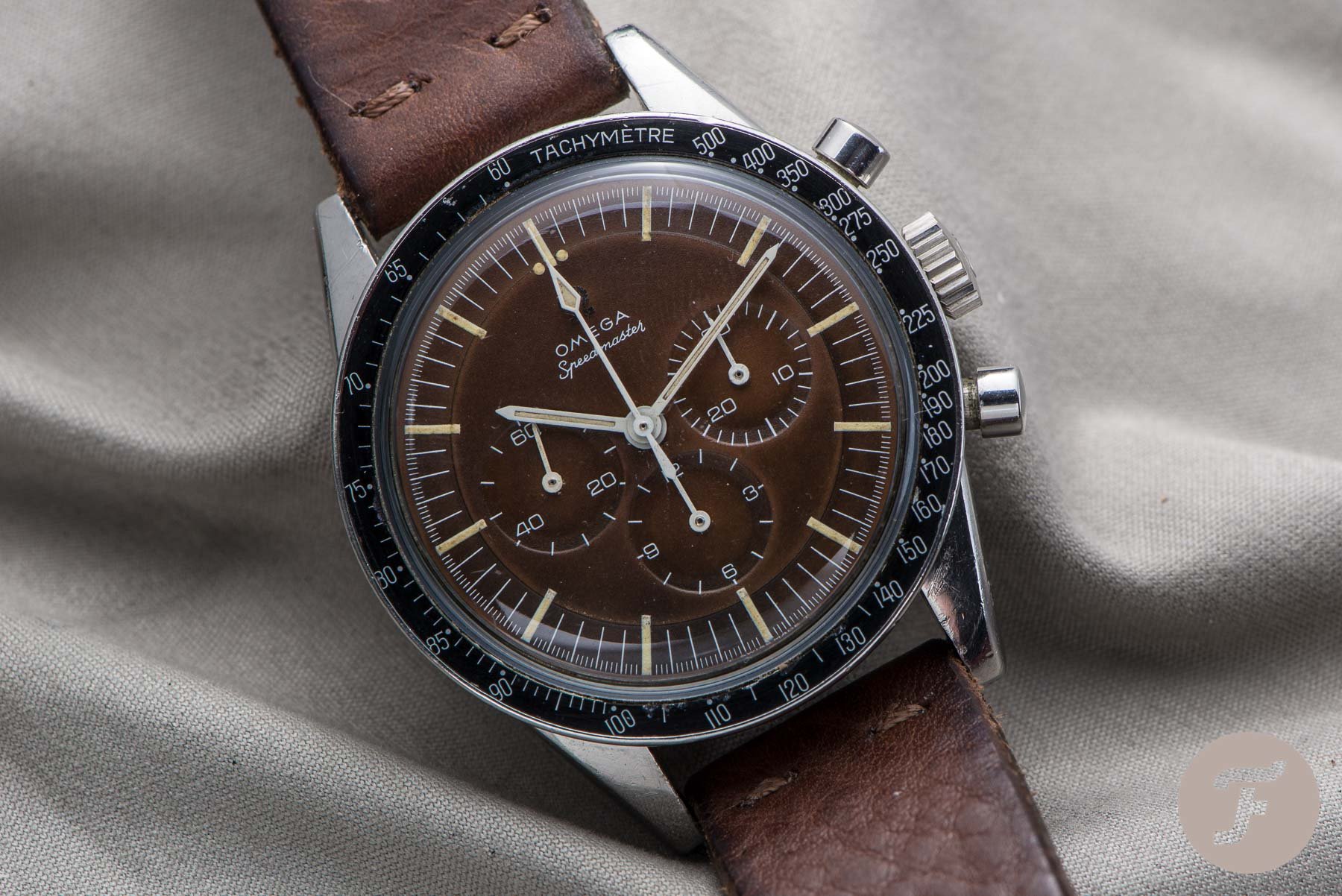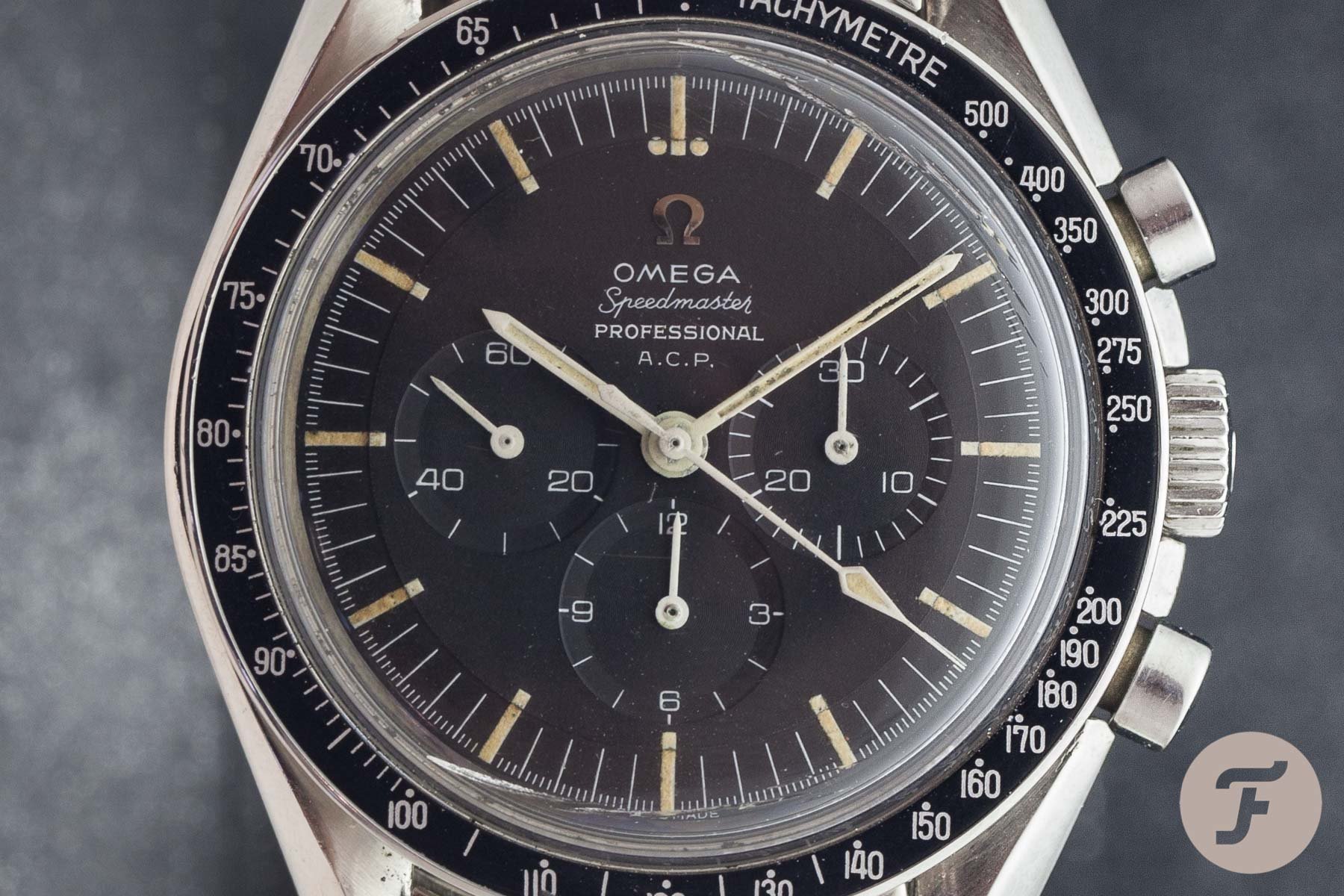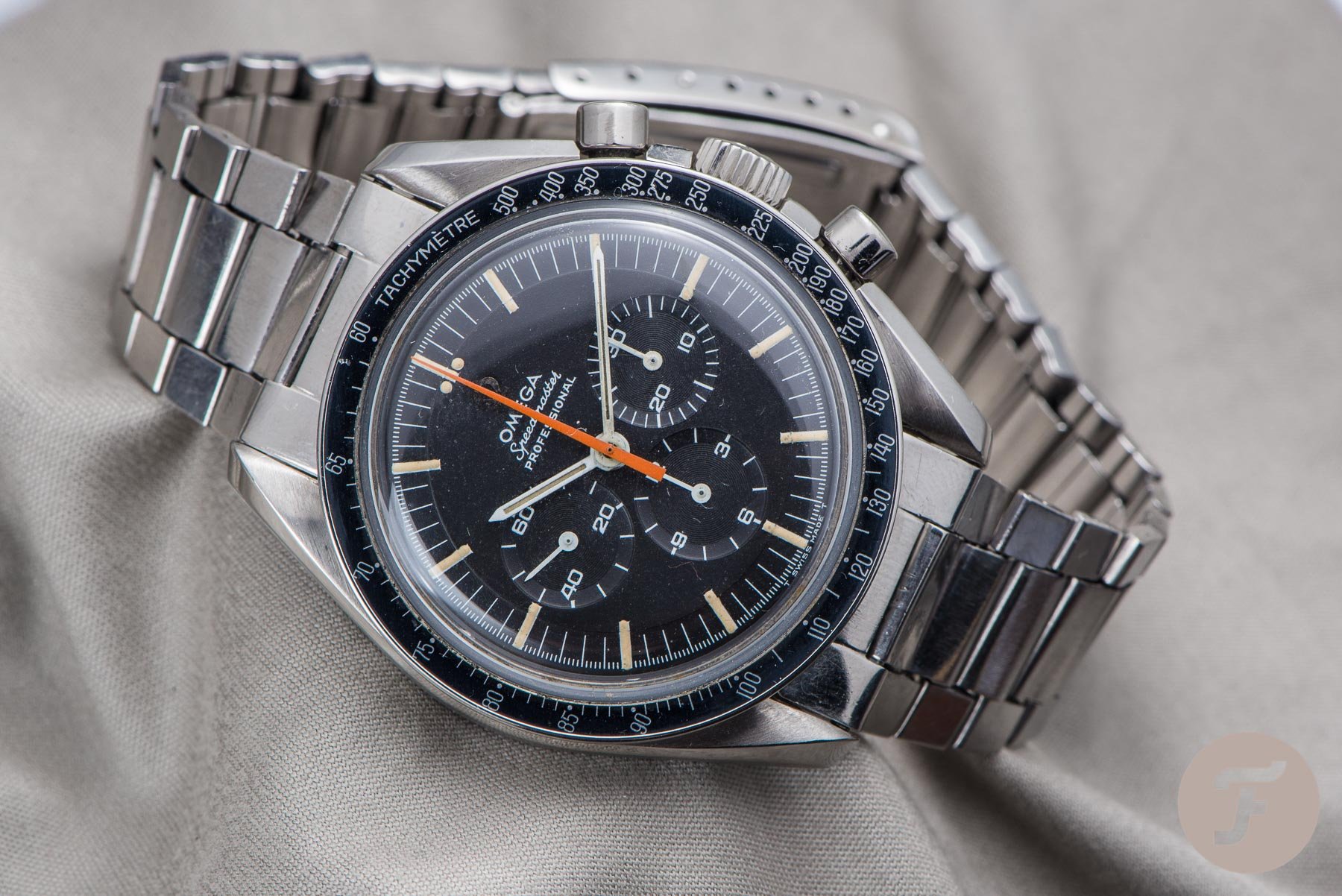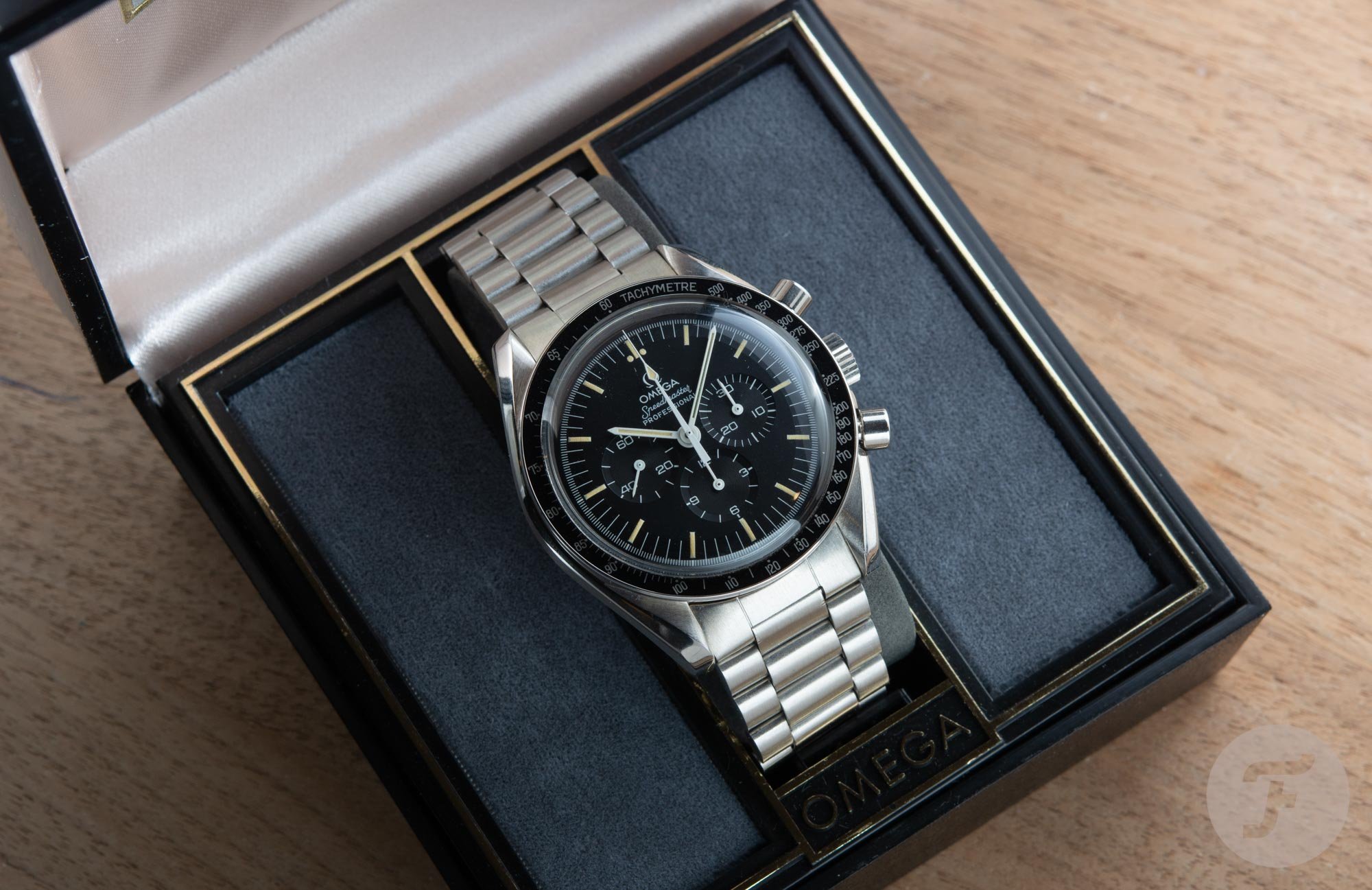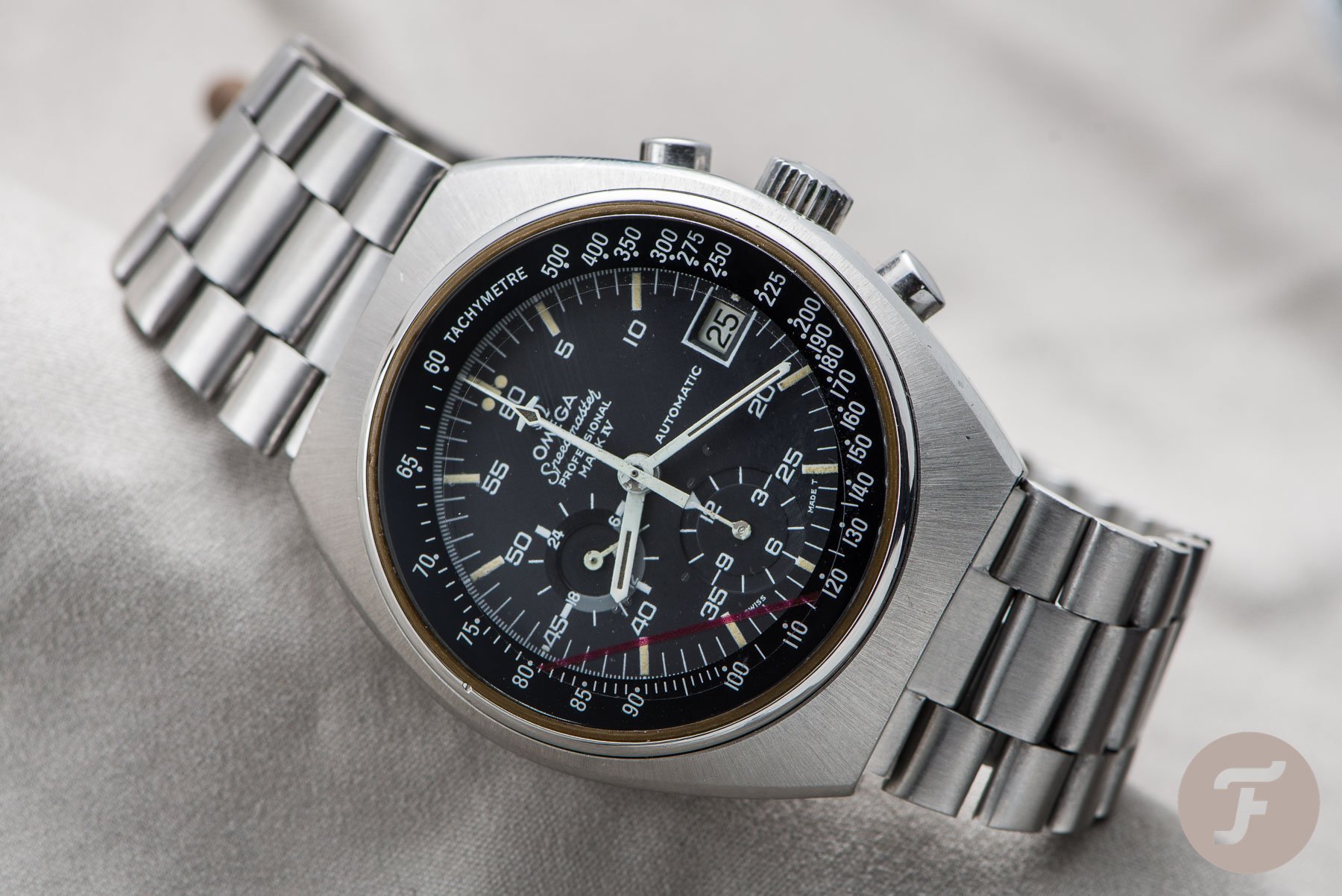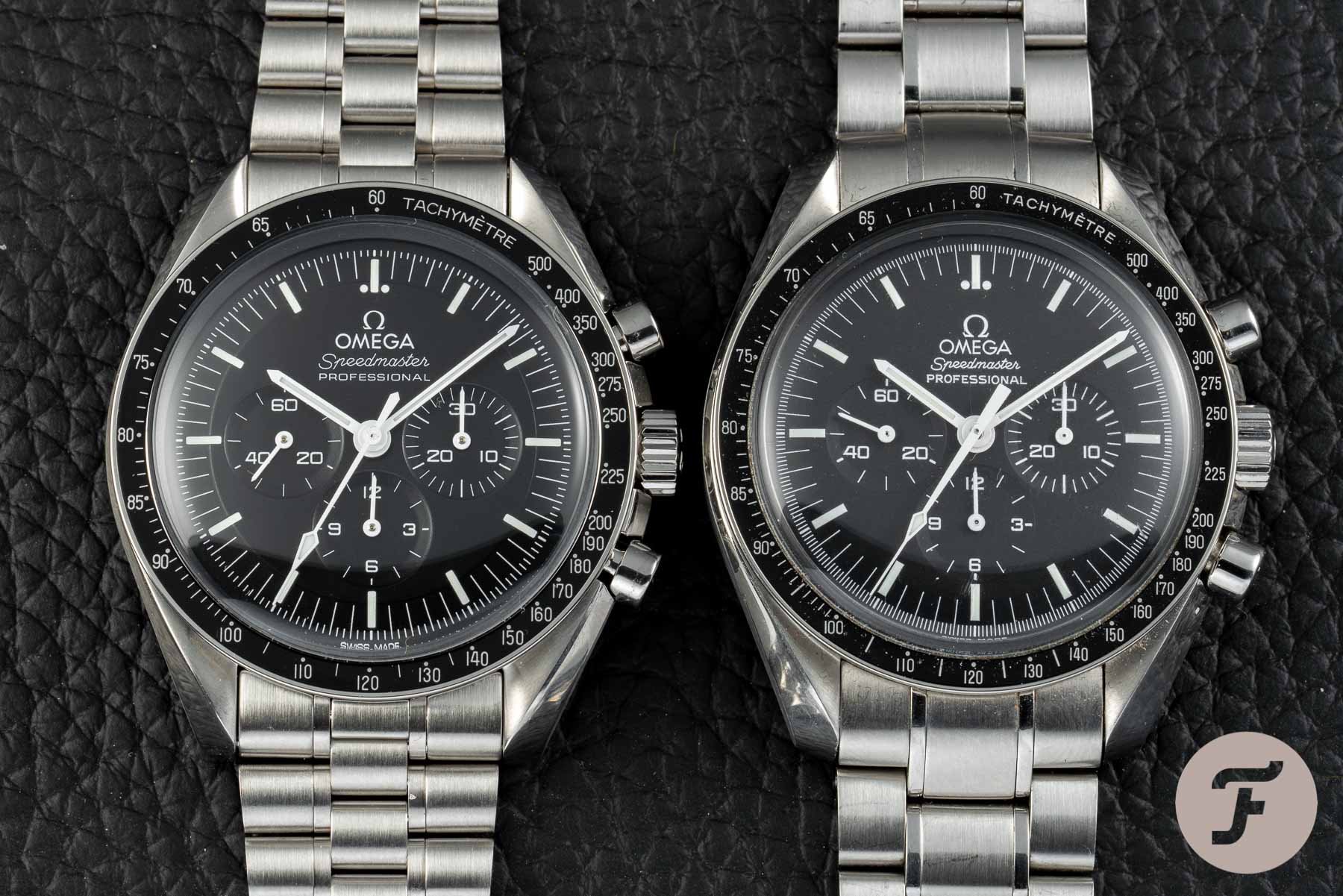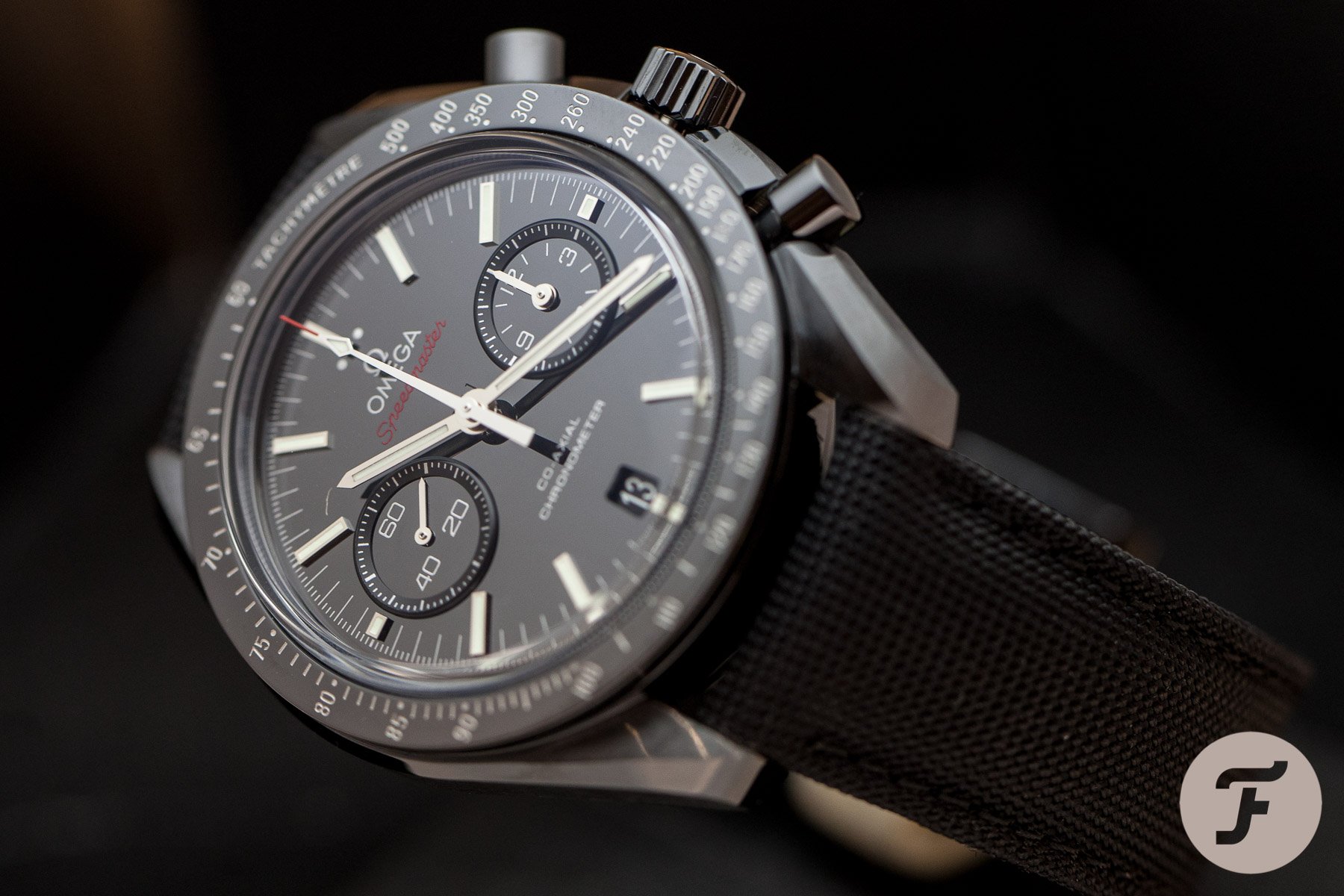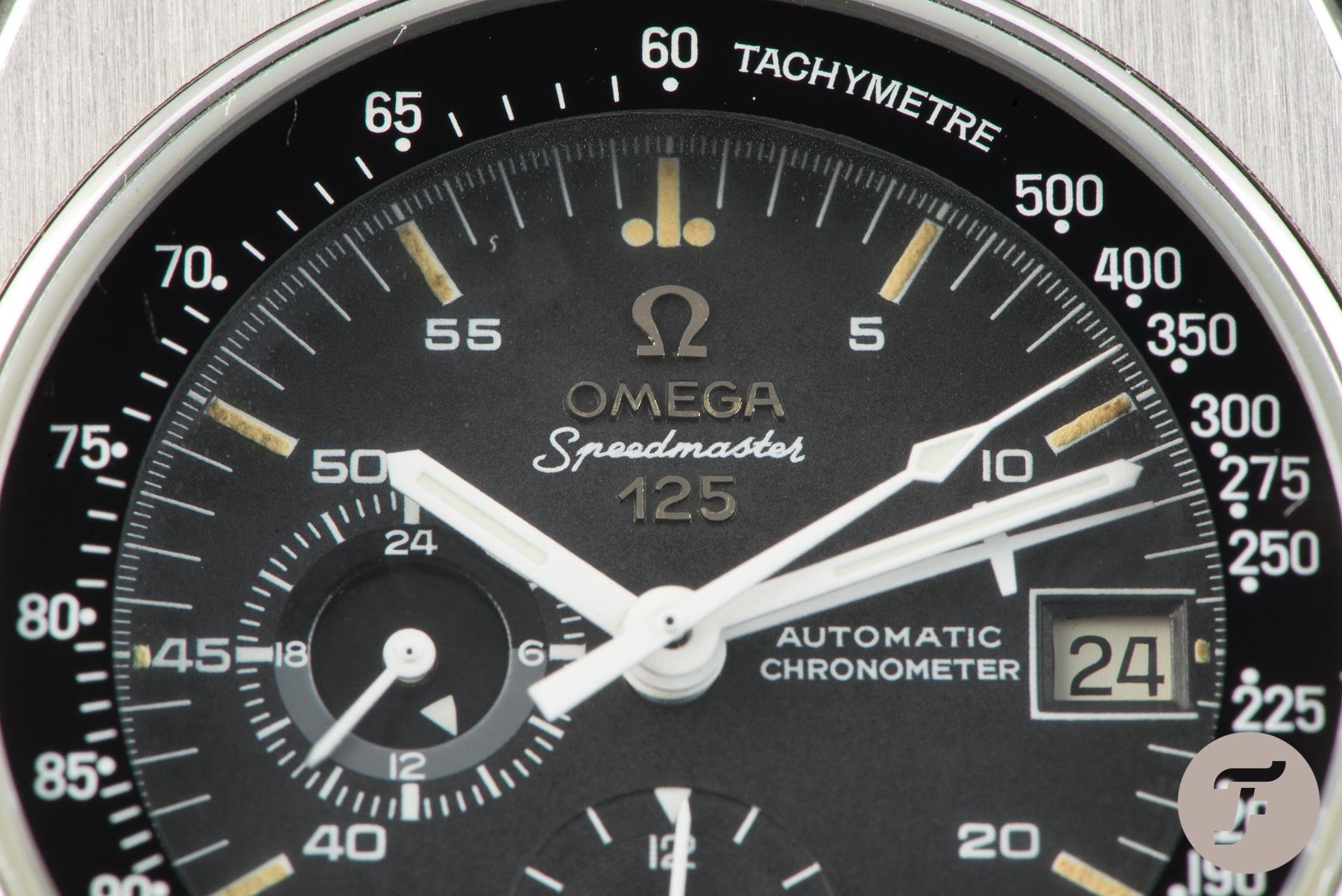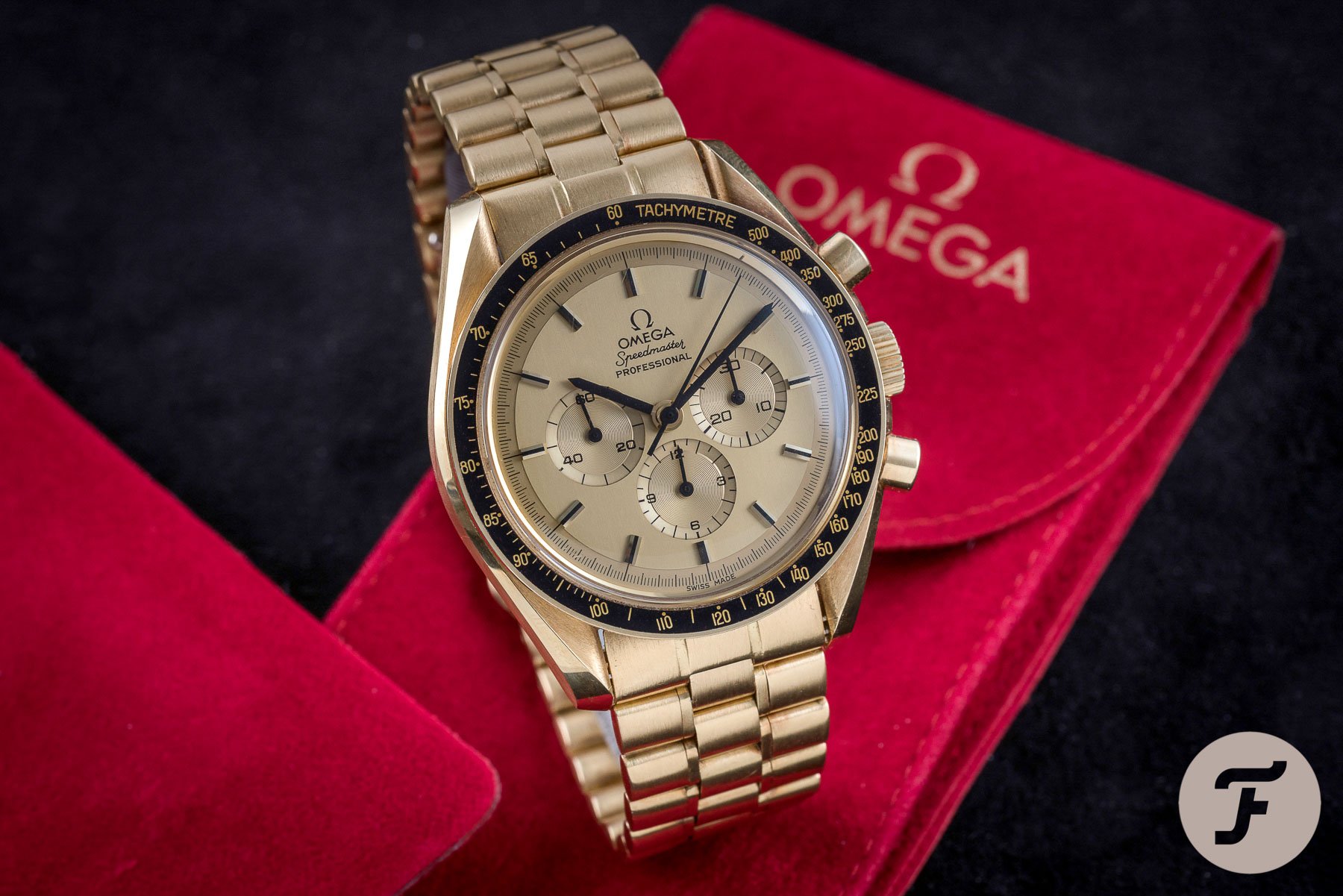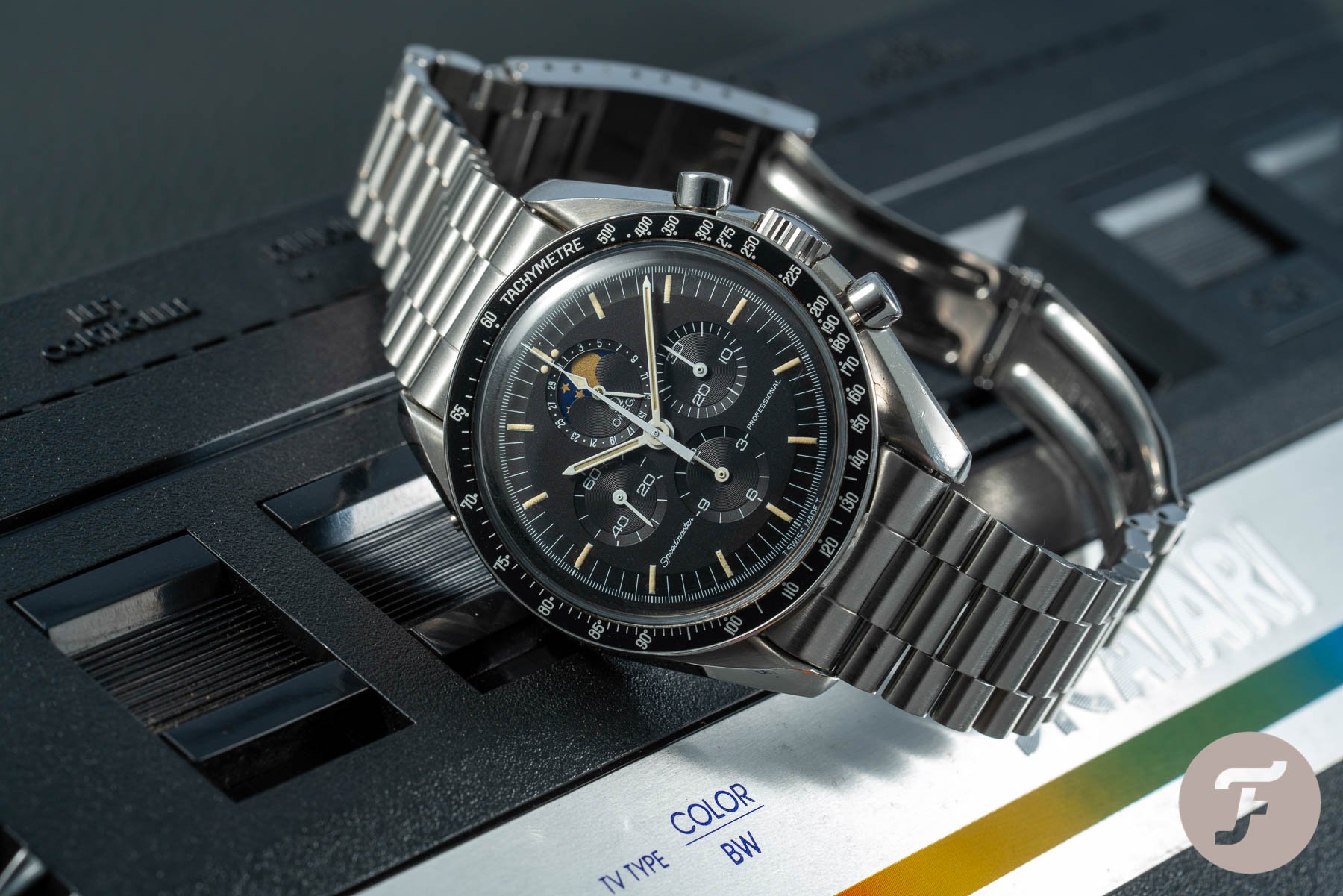Welcome to our Omega Speedmaster References overview. In the past 17 years, we published many articles on the world’s most iconic chronograph, and on this page, you will find these articles sorted by Speedmaster reference and on specific selections.
For the classic Omega Speedmaster, we decided to make a selection per generation until 1988 starting with the Speedmaster CK2915 from 1957. In 1988, Omega introduced a new coding system and a wider variation of Speedmaster (Moonwatch) models. For the Mark-series, which were introduced from 1969 to 1984, there’s a separate section as well, as well as for other modern non-Moonwatch models. We will keep this page up-to-date and add our Speedmaster articles to the dedicated sections below.
Speedmaster CK2915
The first Speedmaster on the market was reference CK2915. Introduced in 1957 as part of this trilogy of watches for professional use included the Railmaster and Seamaster 300 as well. The Speedmaster CK2915 was the first chronograph in the world to use a tachymeter on the bezel (instead of on the dial). Initially, the Speedmaster was meant for motorsport and racing but also aimed at technicians and scientists who needed a chronograph. Omega used its caliber 321 movements in the Speedmaster watches until they introduced reference 145.022 in 1968.
Production years: 1957 – 1959
References: CK2915-1 to CK2915-3
Dimensions: diameter:38.6mm (39.7mm on the CK2915-3 with black bezel) / lug-to-lug: 48mm / lug-width: 19mm
- The Very First Omega Speedmaster CK2915 From 1957
- Two Speedmaster CK2915-1 Watches Being Auctioned At Bukowskis
- Interview With A Speedy Collector – From A CK2915-3 To The Silver Snoopy Award
- An Omega Speedmaster CK2915-2 On Auction Today
- The Five Most Expensive Omega Speedmasters Ever Auctioned
- Bonkers Barn Find Vintage Watches
- Omega Speedmaster Tropical Dial Parade – 12 References To Show
- An Interview With The Collector Who Bought The 2915-1 At The Bukowskis Auction
- Omega Speedmaster ’57 – Three Different Versions From 1957 to 2013
Speedmaster CK2998
The Speedmaster CK2998 was the second generation of Speedmasters and actually the first watch to be used in space before NASA did their tender. Astronauts Wally Schirra and Gordon Cooper purchased their Speedmaster CK2998 watches privately and used them in space since 1962. The hands and bezel are different from the CK2915, but the (center) case is the same on the first three generations of Speedmaster watches.
Production years: 1959-1962
References: CK2998-1 – CK2998-6, CK2998-61 & CK2998-62
Dimensions: diameter 39.7mm / lug-to-lug: 48mm / lug-width: 19mm
- First Speedmaster In Space – It Was 54 Years Ago
- First Series Omega Speedmaster CK2998-1, an absolute grail watch
- Speedmaster CK2998-3 Fuerza Aerea del Peru
- Omega Speedmaster CK2998-4 From The Davidoff Brothers
- OMEGA Speedmaster CK2998-5
- John’s Speedmaster CK2998-6 FAP (Fuerza Aerea del Perú)
- Omega Speedmaster Reference 2998-61
- Found: Omega Speedmaster Worn By Willy Mairesse
Speedmaster 105.003
The third generation Speedmaster was sent to NASA for their wristwatch chronograph tender at the end of 1964. The Speedmaster 105.003 was the only watch to pass all NASA’s tests (unlike the watches submitted by Rolex, Longines-Wittnauer, and later on Bulova). The Speedmaster 105.003 was qualified by NASA to be the official watch for all manned space missions. Ed White was wearing two of them on the wrist during his EVA (spacewalk) in 1965. Interesting to know is that it was also the last watch worn on the Moon, on the wrist of Eugene Cernan during Apollo 17. The 105.003 was the last straight-lug case without crown guards.
Production years: 1964 – 1967
References: 105.003-63, 105.003-64, 105.003-65
Dimensions: diameter 39.7mm / lug-to-lug: 48mm / lug-width: 19mm
- Why Ed White Wore Two Speedmaster 105.003 Watches
- A Blue Dial Speedmaster 105.003
- A French Collector Tells Us About His Speedmaster Reference 105.003-65
- Omega Speedmaster 105.003 Ed White
- Omega Speedmaster 105.003-63
- Omega Speedmaster 105.003 Back From The Watch Spa
- The Speedmaster pre-Professional 105.003
- The Three Omega Speedmaster References That Were Worn On The Moon
- How the Speedmaster became the Moonwatch
- The Very Rare Omega Speedmaster 105.002 Watch
Speedmaster Professional 105.012
The Speedmaster Professional 105.012 was the first watch worn on the moon by Edwin “Buzz” Aldrin on July 21st, 1969. After the 105.003 was qualified by NASA in 1965, Omega also started sending the 105.012 (and 145.012) for use by the NASA astronauts. These watches had a slightly larger case, and crown guards (to prevent the pushers from being knocked off). A common misunderstanding is that the “Professional” refers to the NASA qualification, but it does not. The Speedmaster Professional 105.012 was already in production before NASA qualified the Speedmaster.
Production years: 1964 – 1968
References: 105.012-63, 15.012-64, 105.012-65, 105.012-66
Dimensions: diameter 42mm / lug-to-lug: 48mm / lug-width: 20mm
- Jacob’s Omega Speedmaster 105.012-65 $500 Barn Find
- The Speedmaster Professional 105.012-63
- Omega Speedmaster 105.012-66 Racing
- Omega Speedmaster Professional 105.012-65 Blue Dial
- Rob’s Omega Speedmaster Professional 105.012-66CB
- Omega Speedmaster Professional 105.012 Complete Set
- Omega Speedmaster Professional 105.012
- Omega Speedmaster A.C.P Ref.105.012
- Speedmaster Professional 105.012 With Serial Number 2400xxxx
- A NASA Engineer’s Vintage Speedmaster Professional 105.012-65
- 52 Years Ago Today, The Omega Speedmaster Became The Moonwatch
- The Speedmasters That Went To The Moon
- Antiques Roadshow Guest And His £5 Speedmaster
- Sharing A Reader’s Speedmaster 105.012-65 Story
Speedmaster Professional 145.012
In 1967 Omega introduced the Speedmaster Professional with reference 145.012, a minor visual update of the 105.012. The difference between the 145.012 and 105.012 is mainly in the type of pushers. On the 145.012, the pushers are mounted differently to the case (screwed-in) and have larger caps. This Speedmaster Professional is the last one to have the caliber 321 movement and was worn by astronauts Michael Collins, Thomas Stafford, and Alan Shepard. Collin’s Speedmaster Professional 145.012 can be found on display in the Smithsonian.
Production years: 1967 – 1968
References: 145.012-67 145.012-68
Dimensions: diameter 42mm / lug-to-lug: 48mm / lug-width: 20mm
- Apollo 11 Astronaut Michael Collins’ Omega Speedmaster Professional 145.012
- Omega Speedmaster Professional 145.012 Buyer’s Guide
- Mike’s Omega Speedmaster 145.012
- A Speedmaster Pro 145.012-67 As A Wedding Gift
- One Of The Last Omega Speedmaster Professional 145.012 Watches
- Blue Dial Omega Speedmaster Professional 145.012-68
- My Omega Speedmaster Professional 145.012 From 1967
- The Speedmaster Pro 145.012-67
- A Reader’s Speedmaster Professional Pre Moon 145.012 In The Spotlight
- The Speedmasters That Went To The Moon
- 20 Years Of Collecting Speedmasters – How It Started
- The Original Omega Speedmaster Ultraman 145.012-67
- Omega Speedmaster Plaisted Polar Expedition 1968
Speedmaster Professional 145.022
In 1968, Omega introduced a new movement for the Speedmaster, caliber 861. A shuttle cam mechanism instead of a column wheel, and a higher ticking speed (21,600vph instead of 18,000vph). The first iteration in 1968 looked very similar to the last 145.012 references, but in 1969 the Speedmaster Professional also had a slightly different look with its printed Omega logo instead of an applied metal logo. This watch was never used on the moon, but it has been near the moon during Apollo 17 as a board instrument attached to a metal plate. In 1978, NASA qualified the Speedmaster Professional 145.022 to become the watch for the Space Shuttle astronauts. It was also the reference to be available in gold, with the BA145.022-69 and later on in gold & steel (DD145.022).
Production years: 1968 – 1988
References: 145.022-68, 145.022-69, 145.022-71, 145.022-74, 145.022-76, 145.022-78, 145.0022
Dimensions: diameter 42mm / lug-to-lug: 48mm / lug-width: 20mm
- We’ve Found An Astronaut’s Speedmaster Professional 145.022
- The Omega Speedmaster 145.022-76 That Took Me 15 Years To Find
- Omega Speedmaster Professional 145.022 Buyer’s Guide Part 1
- A Beautiful Early Omega Speedmaster Apollo XI 1969 BA145.022
- Speedmaster 145.022-69 Three Musketeers
- Auction Result Of The Omega Speedmaster Alaska III 145.022
- Hands-On With The Omega Speedmaster Professional 145.022-69
- Speedmaster Professional 145.022-69 Straight Writing
- The Omega Speedmaster Racing 145.022-68
- Reader’s Story On His Omega Speedmaster 145.022-69 Purchase
- A Speedmaster Professional 145.022-71 Non-NASA (and Original)
- Speedmaster Professional 145.022-69 from 1971
- Our Reader’s Speedmaster 145.022-78 Story
- The Omega Speedmaster Professional 145.022-69
- A 1982 Omega Speedmaster Professional 145.022
- The Gold Speedmaster Professional BA145.022
- The Most Expensive Omega Speedmaster Professional 145.022 Ever
- A Speedmaster Pre-Moon from ’69
- Your Speedmaster Story — A Christmas Gift, Jim Lovell, And A Doctors Watch
- Interview With A Collector On His 1985 Speedmaster
- Finding An Honest Speedmaster (145.022-78)
- A Dead Stock 1977 Omega Speedmaster Professional
- Watch Fan Discovers Forgotten Moonwatch (145.022-69) In A Box Of His Grandfather
- Early Gold Speedmaster Moonwatch BA145.022-69 With “Wide Oval O” Dial
- A Fan Talks About His Speedmaster Transitional From 1968
- Speedmaster Radial Dials
- Omega Speedmaster Transitional – Balazs’ Story
- Speedmaster Alaska Project (The Original Alaska II and the 2008 Re-Edition)
- Omega Speedmaster Apollo-Soyuz 1975
- Omega Speedmaster Professional Radial Dial 1978
- Dutch Comics Writer and Cartoonist Martin Lodewijk (Agent 327) Wearing A Speedmaster
- Wally Schirra’s Gold Omega Speedmaster Professional BA145.022-69
- Introducing Omega Speedmaster Professional DD145.0022
- Cosmonaut’s Anatoly Artsebarsky’s ‘Flown’ Speedmaster Pro Hammered At CHF 47,000 Swiss Francs
Speedmaster (Professional) Mark Series
In 1969, as a result of a prototype for NASA (codename Alaska), Omega introduces the Speedmaster Professional Mark II. A tonneau-shaped case, with a tachymeter scale under the crystal and using Omega’s caliber 861. Omega continued the Mark series until the mid-1980s, with the Speedmaster Mark V. In between, there were the Mark III, Mark IV, and the “unofficial” Mark 4.5. The Mark III and Mark IV used Omega’s automatic chronograph caliber 1040, based on Lemania’s 1341. The Mark III was introduced in 1971 and the Mark IV in 1973. The Mark 4.5 was introduced right after, in 1974, although it never was an official Mark-series. However, we include it in this overview anyway. The Mark V was introduced in 1984 and like the 4.5, fitted with a caliber 1045 movement (based on the Lemania 5100). The Mark V was based on a previously designed Speedmaster, reference 345.0803, that was only delivered to the German market. The Mark V was delivered worldwide though. In the same case, Omega created a moonphase model in 1985. In 2014, Omega re-introduced the Speedmaster Mark II watch, with a slightly larger case and a modern Omega movement. These are in the “Modern Speedmaster Variations” section below.
- What Makes The Omega Speedmaster Alaska I Project Watch So Special? (pre-Mark II)
- The Omega Speedmaster Mark II Racing 145.014
- Omega Speedmaster Mark II 145.014
- Omega Speedmaster Mark II 145.014 with Racing Dial
- Vintage Speedmaster Mark II Buyer’s Advice
- Omega Speedmaster Mark II 1969 – 2014 Review
- Omega Speedmaster Mark III Series
- Omega Speedmaster Mark III Revisited
- The Speedmaster (Professional) Mark III 176.002 From Ben Oliver
- Omega Speedmaster Professional Mark IV
- A Reader’s Speedmaster Mark 4.5 in New Old Stock Condition
- Omega’s Speedmaster Mark 4.5
- The Speedmaster Mark 4.5 Financed By The Spy Who Loved Me
- Omega Speedmaster Mark V Reference 376.0806
- Omega Speedmaster Mark Series
- Omega Speedmaster Teutonic 145.0040
Modern Speedmaster (Professional) Moonwatch References
In 1988, Omega introduced a new coding system for their reference numbers. 145.022/145.0022 (as many other references) were continued to be used as a reference for the case part, but the watches themselves received an entirely new reference number. In the case of the Speedmaster Professional, it became the reference 3590.50. The first model was basically the same as the last 145.0022, but in the years after, Omega carried through changes to the movements, bracelets, etc. In 1997, Omega started to use the new caliber 1861 movement. A slight update on the previous 861. Caliber 1861 was used for the Moonwatch till 2020. In 2021, we saw the introduction of the new Moonwatch with Master Chronometer-certified caliber 3861 movements. Then, of course, there are a plethora of special, limited, and numbered editions of the Speedmaster Moonwatch. Omega likes to celebrate and commemorate the Apollo 11, Apollo 13, Apollo 15, and Apollo 17 missions, for example. But you will also find other events celebrated with a special edition of the Speedmaster. In 2019, Omega re-introduced the column-wheel chronograph caliber 321 movements. First used in a special platinum Speedmaster Professional with an onyx dial with subdials made of lunar meteorite, and in 2020 in a straight-lug reference 105.003 based Speedmaster. These are not limited editions, but the production capacity for this caliber 321 is limited to 1000-2000 movements every year.
- Omega Speedmaster Professional Speedy Tuesday “Tribute to Alaska III” 311.32.42.30.01.001
- Omega Speedmaster Professional Speedy Tuesday “Ultraman” 311.12.42.30.01.001
- Everything You Need To Know About The New Omega Speedmaster Moonwatch (Master Chronometer)
- Hands-On Watch Review: Omega Speedmaster Moonwatch — New Vs. Old
- Why I Bought The New Omega Speedmaster Moonwatch — And Went With The Hesalite Version (310.30.42.50.01.001)
- Why I Bought The New Omega Speedmaster Moonwatch Sapphire Sandwich (310.30.42.50.01.002)
- Hands-On With The Omega Speedmaster Sedna Gold 310.60.42.50.01.001
- My Favorite Moonwatch Master Chronometer — The Omega Speedmaster Canopus 310.60.42.50.02.001
- Hands-On Omega Speedmaster Caliber 321 Review (Including Video)
- Hands-On: Omega Speedmaster Moonwatch Platinum Caliber 321 311.93.42.30.99.001
- Head-To-Head: Omega Speedmaster 60th Anniversary Vs. Speedmaster Calibre 321
- One Year With The Omega Speedmaster Calibre 321 311.30.40.30.01.001 — Would I Buy It Again?
- How Does the Speedmaster Calibre 321 Compare To The Original 105.003
- Omega Speedmaster Moonwatch Master Chronometer Vs. Omega Speedmaster “Ed White” 321 (Video)
- Steel Omega Speedmaster Apollo 11 50th Anniversary 310.20.42.50.01.001
- The 2019 Gold Speedmaster Apollo XI vs The 1969 Speedmaster Apollo XI
- The Speedmaster Apollo 11 50th Anniversary Moonshine 310.60.42.50.99.001
- Video: Omega Speedmaster Sedna Vs. Rolex Daytona Everose Gold
- Hands-On With The Omega Speedmaster 60th Anniversary 311.10.39.30.01.001 38.6 mm
- Hands-On: Omega Speedmaster 311.10.39.30.01.001 Review
- Omega Speedmaster Professional 3570.50
- Why Every Speedmaster Fan Needs A Model With Hesalite Crystal (3570.50)
- Why I Purchased The Speedmaster Professional 3590.50
- Hands-On With The Omega Speedmaster CK2998 Reference 311.33.40.30.02.001
- The Omega Speedmaster FOiS 311.32.40.30.01.001
- Omega Speedmaster Professional 3592.50 With Caliber 863
- A Very Rare Omega Speedmaster 3693.50.81 ‘150th Anniversary of Omega’
- My Father’s Day Watch — The Omega Speedmaster’57 Replica Ref. 3594.50
- My Favorite Under-The-Radar Omega Speedmaster (3594.50) Watch
- The Omega Speedmaster Snoopy Award 3578.51
- Hands-On Omega Speedmaster Apollo 13 Silver Snoopy Award 311.32.42.30.04.003 Review
- Hands-On: Omega Speedmaster Silver Snoopy Award 50th 310.32.42.50.02.001 Review
- A Video Review On The New Omega Speedmaster Silver Snoopy Award 50th Anniversary
- How Did Snoopy End Up On A Speedmaster?
- The Speedmaster Apollo XI 35th Anniversary 3569.31
- The Speedmaster Enamel Dial 50th Anniversary 311.33.42.50.01.001.001
- Speedmaster Professional Apollo 15 35th 3366.51.00
- Gold Speedmaster Professional Moonwatch Jubilee 27 CHRO C12 3691.50
- Speedmaster From the Moon to Mars, reference 3577.50
- A True Oddity: The Omega Speedmaster Hackett
- Incoming Question From A Reader “Which Modern Speedmaster Is Closest To The Original MoonWatch?”
- Speedmaster Alaska 2008 Re-Edition
- Omega Speedmaster Professional Galaxy Express 999 3571.50
- A Caliber 1863 Speedmaster Professional 3572.50
- Omega Speedmaster Tintin 311.30.42.30.01.004
- An Omega Speedmaster 50th Anniversary Prototype
- Omega Speedmaster Professional Apollo 11 45th Anniversary 311.62.42.30.06.001
- The Speedmaster Gemini IV 40th Anniversary 3565.80
- Omega Speedmaster Professional Gemini V 3597.03
- Omega Speedmaster Professional Apollo 11 30th Anniversary 3560.50
- Omega Speedmaster Professional Racing 3570.40
- Omega Speedmaster Professional Apollo-Soyuz ‘Meteorite’ 311.30.42.30.99.001 Review
Modern Speedmaster Variations
Besides the classic Moonwatch and Mark-series, Omega also had the Speedmaster Reduced models since the 1980s. Today, Omega has a 38mm version that replaces the Reduced and also makes the Speedmaster suitable for the smaller wrist. In 2013, Omega introduced the Speedmaster “Dark Side of the Moon”. The first Speedmaster to have a case, bezel, and dial made of (black) ceramic. This 44.25mm Speedmaster also has the in-house developed caliber 9300 movement. In the years after, Omega introduced a number of variations on the Dark Side of the Moon, the latest being the Apollo 8 and Alinghi, both featuring skeletonized dials to have a closer look at the movement. Below, you will find articles and reviews covering modern Speedmaster variations, including the ones mentioned above and of course the famous Michael Schumacher editions as well as some of the rare variations they did for specific markets, such as a perpetual calendar for the Japanese market.
- A Hands-On Omega Speedmaster Chronoscope Review
- Is This The Best Omega Speedmaster Chronoscope? Introducing The Bronze Gold Reference
- Apollo 8 – The Best Speedmaster Dark Side of the Moon Edition
- Hands-On Omega Speedmaster Alinghi Watch Review
- Speedmaster Dark Side Of The Moon 311.92.44.51.01.003
- Hands-On Omega Speedmaster Dark Side of the Moon Vintage Black Review
- The Omega GSotM (Grey Side of the Moon)
- Omega Speedmaster ’57 Caliber 9300 Review
- We Have A Look At The New Ceramic Speedmaster Collection
- Full Gold and Bicolor Omega Speedmaster ’57 Caliber 9301 And 9300
- The Omega Speedmaster White Side of the Moon 311.93.44.51.04.002
- Hands-On Omega Speedmaster Mark II 327.10.43.50.01.001 Review
- Why The Speedmaster X-33 Matters
- The Omega Speedmaster Reduced 3510.50
- Omega Speedmaster Reduced 3810.20 White Dial
- Speedmaster Reduced 3510 versus Speedmaster Professional ‘Moonwatch’
- The Rise of the Omega Speedmaster Reduced
- The Eagle Has Landed. Speedmaster for Ladies
- Hands-On With The Omega Speedmaster 38 324.63.38.50.02.004 in Gold
- Rare Speedmaster Michael Schumacher 3559.32
- Omega Speedmaster Day-Date Mk40 3520.50
- Omega Speedmaster Perpetual Calendar 3650.10
- Speedmaster Automatic 3513.53.00 For The Japanese Market In 1996
- Speedmaster Schumacher Yellow 3810.12.40
Speedmaster 125
In 1973, Omega celebrated its 125th anniversary with a special Speedmaster: the Speedmaster 125. This huge chunk of steel has impressive dimensions (42mm x 51mm x15mm) and a weight of approx 180 grams. Inside was the world’s first automatic chronograph chronometer movement, caliber 1041. Often incorrectly assumed is that there were only 2000 of these watches produced, but recent research (also by the Omega Archives) shows that this number has been much higher.
- Omega Speedmaster 125 Production Number Update
- Omega Speedmaster 125 Worn By BMW’s Head of Design Adrian van Hooydonk
- The Speedmaster 125 – World’s First Automatic Chronograph Chronometer
Speedmaster Professional Apollo XI 345.0802
To commemorate the fact that the Speedmaster Professional was qualified (again) by NASA in 1978 to serve as the chronograph during the Space Shuttle program (starting in 1981), Omega introduced this numbered edition Speedmaster Professional in 18kt gold. There were 300 of them in yellow gold and 20 of them in white gold. The white gold edition was only delivered to the German market. Approximately half of the amount of the yellow gold watches also went to Germany. This particular model was also the first Speedmaster to have a transparent case back.
Production year(s): 1980-1988
References: BA345.0802 (yellow gold), BC345.0802 (white gold)
Dimensions: diameter 42mm / lug-to-lug: 48mm / lug-width: 20mm
Movement: Caliber 861L (L = Luxury finish)
- Numbered Gold Speedmasters As Tribute To The Renewed Flight Qualification For The Space Shuttle
- Astronaut Thomas P. Stafford’s Gold Speedmaster Professional 345.0802
- We Take A Closer Look At Two Gold Omega Speedmaster Professional Apollo XI Watches
- Christie’s Auctions Three Rare Display Back Speedmaster Professional Watches
Speedmaster Moonphase
In 1986, Omega introduced three different Speedmaster references with a Moonphase complication. One is based on the Moonwatch, and has reference 345.0809. Only 1300 of those have been produced. Omega used the teutonic Speedmasters (based on the German market reference 345.0803), limited to 700 pieces in total (two references). So in total, Omega created 2000 Speedmaster Moonphase watches in the mid-1980s with caliber 866. Later on, in the 2000s, Omega re-introduced this model as reference 3575.20 with a slightly modernized dial and new movement variation (caliber 1866). Today, Omega has a number of Speedmaster Moonphase references in the collection, based on their 44.25mm case and using their in-house caliber 9905 with a Master Chronometer certification.
- Hands-On With The Omega Speedmaster Moon 345.0809
- Omega Speedmaster Pro Moonphase ST345.0809
- Omega Speedmaster White Gold Moonphase 3689.30.31
- Omega Speedmaster Professional Moonphase 3876.50
- Omega Speedmaster Moonphase Co-Axial Master Chronometer
- Three New Platinum Omega Speedmaster Moonphase Watches
- Hands-On With The Speedmaster Moonphase Co-Axial Master Chronometer in Platinum
- Omega Speedmaster Moonphase Calendar 3330.20
- Back On Stage: The Omega Speedmaster Platinum Moonphase Master Chronometer
- Hands-On With The Speedmaster Blue Side of the Moon Moonphase Aventurine Dial
- Hands-On With The ‘Blue Side Of The Moon’ Speedmaster Master Chronometer Moonphase
- Omega Speedmaster Professional Moonphase 3575.20
Speedmaster Automatic “Holy Grail”
In 1987, Omega did something amazing. They combined the typical Speedmaster Professional case with the caliber they used previously for the Mark 4.5 and Mark V: caliber 1045. This Lemania 5100 based movement featured a central second and minute hand for the chronograph, and a day, date, and 24-hour indicator. Only 2000 pieces have been made of this watch, and they’ve become heavily sought-after. The watch has been nicknamed “Holy Grail” as the late and legendary Speedmaster collector Chuck Maddox referred to it.
Production year: 1987
Reference: 376.0822 (bracelet reference 1450)
Dimensions: 42mm x 15mm
- The Speedmaster 376.0822 Holy Grail Explained
- Omega Speedmaster 376.0822 – The Holy Grail
- Buying Guide: The Best Omega Watches From The 1980s
- Speedmaster Holy Grail For The Italian Market
Do you want to discover more Speedmaster content? Make sure to visit our dedicated Speedy Tuesday section with +500 articles on the world’s most iconic chronograph.

